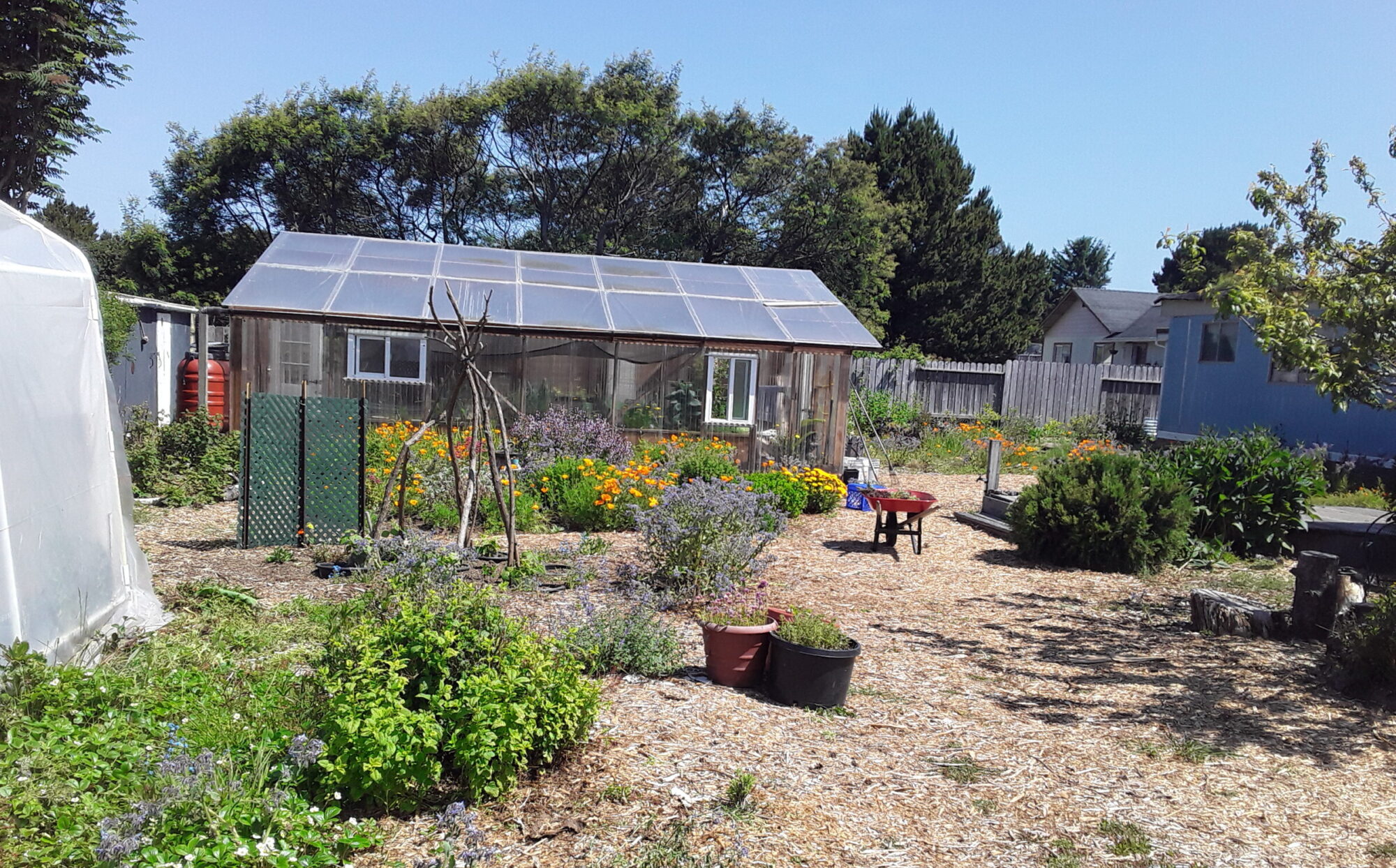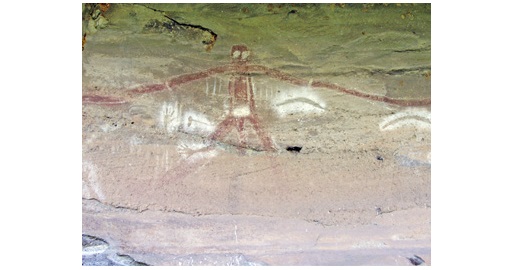After working another day in the vines, we drove out with our supervisor, Rod Smith, to Baiame Cave. Rod is your quintessential Aussie bloke, speaking in a thick Outback accent, but only when absolutely necessary. At age 76, he works all day for the vineyard, then heads home for chores at his enormous spread called Glen Anne.
Along the winding public road through Glen Anne is an ancient aboriginal meeting place called Baiame (Rod pronounced it “Buy Amy”) Cave. Not really a cave, it’s an alcove eroded out of the sandstone cliff. The alcove wall features a prominent painting of Baiame, which Australian anthropologists believe is 4,000 years old.
Baiame is one of the tribal names for the All-Father. Wanaruah aborigines tell stories of how Baiame created everything and how he taught the people how to live before departing this world at Mount Yengo. At the cave, he is depicted with long arms outstretched to either side, not unlike a crucifix at the apex of a church.
I was fascinated by the similarity between these aboriginal stories and the origin stories of American Indians – and biblical accounts. The Creator comes in human form to teach people the rules and rites of life. He departs but continues to guide those who seek the truth.
Experts believe aborigines arrived in Australia 40,000 years ago – either by boat or land bridges that were submerged at the end of the last Ice Age. Meanwhile, the people we call Native Americans were arriving from Asia via land bridges to North America some 14,000 years ago. Similarities in their origin stories must go back more than 40,000 years!
Do the stories contain similar characters and themes because they reflect actual events in a remote past beyond all reckoning? Or, as Carl Jung suggested, are they products of a common subconscious filled with images hard-wired into the human psyche? Or some other explanation – will we ever know for sure?
One thing we do know – aboriginal people lived on this planet for 40,000 years without leaving much of a mark. They lived sustainably within their ecosystem. White man, however, has taken less than 200 years to bring us all to the brink of extinction.





